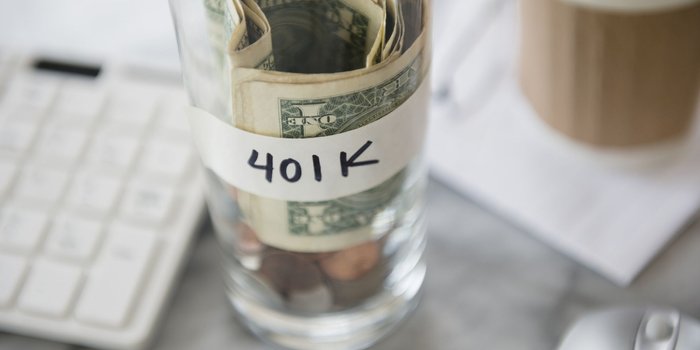
Running a marathon is tough! Running a marathon with a 50-pound backpack is darn near impossible. The vast majority of American’s are unknowingly running their retirement race with an unbearable load. The dead weight dragging us down are the excessive and unnecessary fees that plagues most retirement plans.
The fees in most 401(k) plans, especially those with small companies, can exceed more than 1.5 percent annually and some are north of 2 percent. While those percentages sound small at first, consider their impact over the course of your life….
Let’s assume you get a 7 percent annual return over your lifetime. This is less than the market has averaged but on par with a typical balanced portfolio over the long haul. A single one-time investment of $10,000 will grow to more than $295,000 over a 50-year period. That’s the power of compounding! But now let’s strap on that backpack of high fees and see just how efficient we are…
Let’s say the fees in your 401(k) are an egregious 2 percent annually. This means the provider and the broker get their 2 percent off the top, no matter what. And just like that, your 7 percent return becomes a 5 percent return. Growing at 5 percent, your one-time investment will only grow to $115,000 over the same time frame — less than half of what you could have had!
Most of us will be none the wiser to the amount we left on the table but it could mean the difference of having to work a decade longer than hoped! Or worse, running out of money in retirement and be forced into family or Government assistance.
Now, it’s true that nothing is free in this world so what would be a reasonable fee structure for 401(k) plans? I am glad you asked. The vast majority of very large 401(k) plans, like those with Fortune 1000 companies, have very competitive fee schedules due to their buying power and astute third party consultants (a luxury that small business owners just don’t have). Most pay 0.65 percent or less annually for all investment related fees (meaning those that are extracted from your account balance).
To continue our marathon metaphor, the participants in those large plans are running the race with nothing but a tank top, short shorts and the latest, lightest running shoes while smaller companies are unfairly given the equivalent of lead shoes. So when the gun goes off, employees are unfairly charged simply because of the size of their employer. At the risk of mixing my metaphors, this is the most unlevel playing field imaginable.
We collect the “fee disclosure document” from thousands of small plans each year and in our last study, not a single major provider (mostly insurance companies and payroll companies) had average fees under 1 percemt annually (with the bulk falling between 1.3 percent and 1.9 percent annually). The primary reason is compensation to the provider to keep funding massive marketing budgets (think logos on stadiums and blimps) and compensation to the local broker who has the relationship with the business owner and will take him/her golfing every so often.
So what can you do about it? If you are an employer, you are obligated by law to periodically benchmark your plan against alternatives (a practice very few do or even know they should do). There are now a handful of next generation providers that don’t use brokers, don’t get paid commissions and don’t get kickbacks from mutual funds. These savings add up quick so that small business owners can have a very competitive and transparent fee structure (0.65 percent or less is a good target).
In you are an employee, ask the owner or human resources if they have done a benchmark recently. Many are pleased to find out that a fee reduction is in order as they too have their retirement accounts in the plan (A good first step is to forward this article). You can also ask for a copy of your fee disclosure from the existing provider’s customer service line.
It’s worth noting that as I write this, the market has taken steep correction with the worse December on record. While the US market has always risen over time, these short-term corrections or bear markets are simply part of the journey. However, from the standpoint of fees, if your 401(k) plan takes a short term hit, it will have a much harder time keeping pace when the market recovers if the fees remain high. It’s like adding a couple steep San Francisco hills to the marathon. Insult to injury, one could say.
So let’s shed the dead weight of high fees in 2019 and give ourselves and our families the absolute best chance of running the retirement race efficiently and finishing with dignity!


